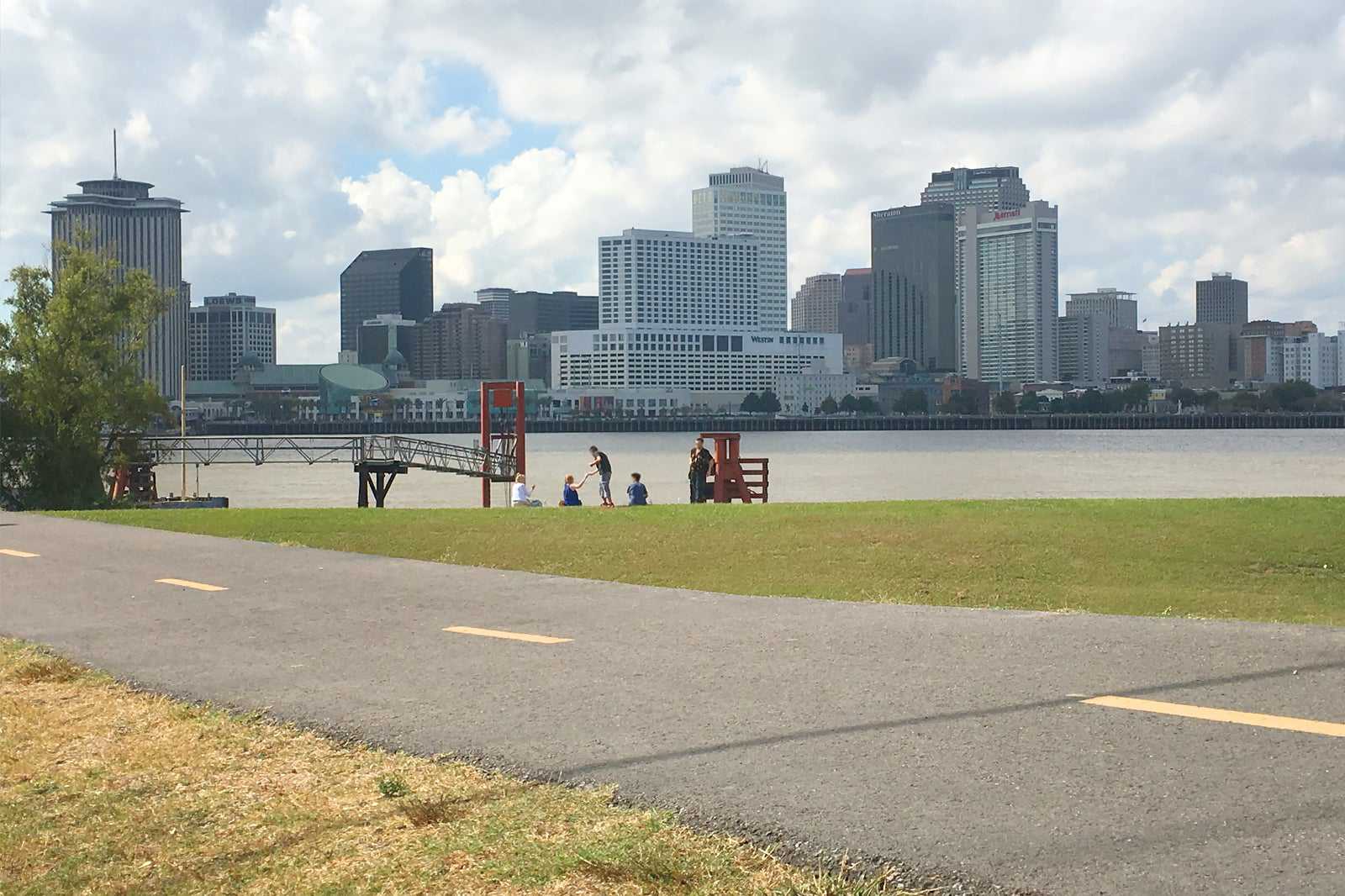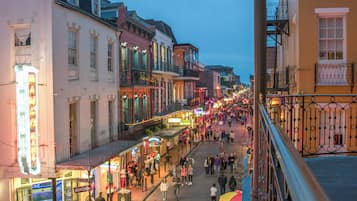The Mississippi River Trail, or MRT, is a bicycle and pedestrian trail extending approximately 3,000 miles from its beginning at the headwaters of the Mississippi River in Minnesota. Also known as U.S. Bicycle Route 45, the trail is a marvelous way to commune with America’s longest waterway as either a bicyclist or a pedestrian.
Fifteen minutes from downtown New Orleans is the Levee Path. This is a 22-mile paved portion of the Mississippi River Trail. Runners, walkers, bikers, and skaters find the path a safe alternative to roadways to enjoy their work-outs.
Mississippi River Trail - one of the highlights of 10 Best Outdoor Adventures in New Orleans (Read all about New Orleans here)

photo by Dominic (CC BY-SA 4.0) modified
Highlights of the Mississippi River Trail
Though initiated in 1996, the Mississippi River Trail was not designated as a bicycle route until 2013, when the entirety of the trail along the Mississippi River was established. Traveling on the MRT lends itself to the ability to tread on the same terra firma where many significant events in American history took place.
All along the journey, there are many historically important stops that you can make. Enthusiasts can explore culturally significant Native American locales like the Lewis and Clark Historic Site in Illinois before traveling on to Vicksburg, the location of an important turning point in the Civil War, just to name a few.

Good to know before traveling the Mississippi River Trail
Sojouring the entire Mississippi River Trail will take travelers through a total of 10 US states. The signs that designate the trail are green, with an image of a bicycle and rider, as well as the letters “MRT” on them.
It is important to note that the MRT utilizes roads and streets, as well as trails atop levees and off-road trails only accessible by bike or by foot. An important mission of the Mississippi River Trail is to develop and promote the use of bicycle-friendly roads and pathways. The trail comes to an end in Venice, Louisiana, at the Gulf of Mexico.


















